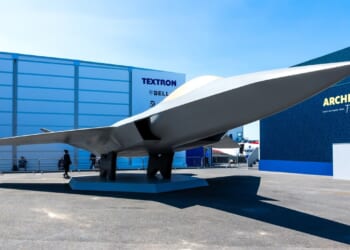The Su-27 Flanker remains a leading component of both Russia’s and Ukraine’s aerial strategies.
The ongoing conflict in Ukraine has greatly decimated both Kyiv and Moscow’s weapon stockpiles. From fighter jets and main battle tanks to air defense systems and other munitions, virtually no type of military equipment has been spared. While it is difficult to ascertain the exact figures surrounding these losses, open-source intelligence analysts have done their best to provide accurate analyses. This week, the Russian Defense Ministry claimed to have shot down a Ukrainian-piloted Su-27 fighter jet. The Ministry also detailed that two guided aerial bombs, hundreds of aircraft-type drones, and two rockets fired from the American-made HIMARS system were also destroyed by Russian air defense systems. Although this claim has not been verified, Su-27s flown by both Russia and Ukraine have been lost throughout the three-year-plus war. The twin-engine, supersonic fighter jet may be a product of the Cold War, but the “Flanker” remains a leading component of both Russia’s and Ukraine’s aerial strategies.
The Flanker
The Sukhoi-designed Su-27 was designed during the height of the Cold War as a counter to America’s own advancing fighter fleet. Specifically, the Northrop Grumman F-14 Tomcat and the McDonnell Douglas F-15 Eagle posed direct threats to the Soviets’ jet fleets. Initially, the Soviet leadership proposed extremely ambitious guidelines for a new homegrown fighter series able to combat their American counterparts. Ultimately, two fighter platforms emerged from this effort. The Su-27A prototype was designed in three Soviet factories, KNAAP, NAPO, and IAPO, under the designation “T-10.” Sukhoi eventually beat out other leading Soviet manufacturers, Mikoyan and Yakolev, to secure a contract to build the fighter. The Su-27, codenamed by NATO as the “Flanker,” made its debut to the West at the 1989 Paris Air Show.
Perhaps the most significant feature incorporated into the Flanker was its armament load. The Soviet jet could be equipped with up to one dozen air-to-air missiles. Specifically, the Flanker could launch both radar-guided and infrared heat-seeking missiles. In 2004, Russia enhanced the fighter’s air-to-air capability with the R-77 missile in addition to its avionics. Today, the jet is equipped with the 30 mm Gryazev-Shipunov GSh-30-1 cannon and 10 hardpoints designed to launch a variety of munitions, including unguided ground-to-air rockets, and both conventional and cluster bombs.
While both Moscow and Kyiv currently fly the Flanker, Ukraine’s fleet relies on largely outdated production blocks. As explained by the Smithsonian Magazine, the Ukrainian Air Force has struggled to adequately maintain its Flanker contingent as its relations with Russia over the last decade have worsened. The Ukrainian aircraft industry began to enhance its Su-27 fighters in 2011. “The Su-27M1, as Ukraine designates the modified aircraft, has new navigation systems, a radar with greater range, and an increased ability to use unguided air-to-ground munitions. Although Ukraine also flies the MiG-29 Fulcrum, the Flanker has a much greater combat range, better armament, and longer-range radar compared with the MiG.” Russia’s fleet of Flankers has also not been impervious. Reports of downed Russian Su-27s indicate Ukraine’s possession of Western-delivered anti-aircraft weaponry and lethal drones is the culprit.
About the Author: Maya Carlin
Maya Carlin, National Security Writer with The National Interest, is an analyst with the Center for Security Policy and a former Anna Sobol Levy Fellow at IDC Herzliya in Israel. She has bylines in many publications, including The National Interest, The Jerusalem Post, and The Times of Israel. You can follow her on Twitter: @MayaCarlin.
Image: DVIDS.

















